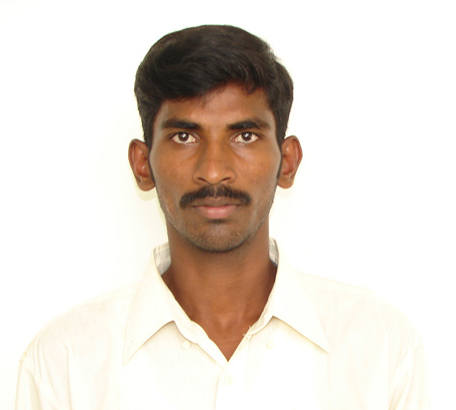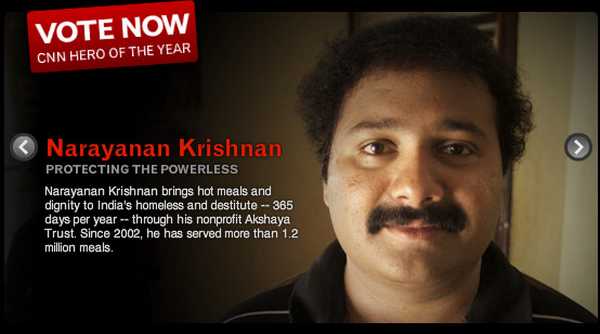- Written by sheeba
- Hits: 2437
EEE-INTELECTIUM'10:EVENTS REPORT
EVENT I-PAPER PRESENTATION
WINNERS
I PRIZE: PL.Rajkumar, Alagappa Chettiar College of Engineering & Technology, Karaikudi
Title: Automated Parking System Using Wireless Systems
Abstract: The paper provides solution to find a vacant parking spot in underground parking lots of office buildings and shopping malls by making an automated parking lot where the available spaces for parking can be displayed at the entrance of the parking area. The concept of working modules is interconnected with ZIGBEE wireless medium to allow all the benefits of local control functions and remote operation without the associated infrastructure costs
II PRIZE: Yogeesh Kumar.M & T.Theepan, Sri Sairam Engineering College, Chennai.
Title: Blind’s Vision - An Innovative Braille System Keyboard for the Visually Impaired.
Abstract: This paper explains the project to help the visually impaired to interact with the computer system at a maximum probability by providing them the total enhancements for interaction with the system and servicing their necessities by the use of special keyboard which has 6 logical switches (or touch sensors) which are used to sense the characters. The typing in this keyboard is very easy, needs no prior practice for those who are well versed in BRAILLE language and takes around only 5 days to learn the typing on the board for those who aren’t familiar in BRAILLE language.
PARTICIPATORY PRIZES:
1. AUTHORS: P.Suresh & R.Venkatesh, Mount Zion College Of Engineering And Technology,
Pudukkottai.
Pudukkottai.
Title: A Single-Stage AC/DC Converter with High Power Factor, Regulated Bus Voltage, and Output Voltage
Abstract: A single-stage ac/dc converter achieving power factor correction (PFC), intermediate bus voltage output regulation, and output voltage regulation is proposed. The converter is formed by integrating a boost PFC converter with a two-switch clamped flyback converter into a single power stage circuit. The current stress of the main power switch is reduced due to separated conduction period of the two source currents flowing through the power switch. A dual-loop current mode controller is also proposed to achieve PFC, and ensure independent bus voltage and output voltage regulations
2. AUTHORS: C. Ram kumar & M.Santhosh kumar , Easwari Engineering College,Chennai
Title: Transmission Of Power To The Island Using HVDC
Abstract: In this paper the transmission of HVDC from Indian mainland to Lakshadweep is analysed at economically cheaper rate.HVDC transmission is more effective and economically cheaper where bulk power is to be transmitted over long distance. Hence the surplus power from a remote place can be exported to the needy place at cheaper rate. The HVDC system require only one transmission wire and the ground return or seawater can be used as an another line. The diesel for D.G set is transported from Indian mainland through ship where lot of economy is lost only for transportation
3. AUTHORS: P.Ramkumar & H.Md.Farook, E.G.S.Pillay Engineering College, Nagapattinam.
Title: Improving Power Quality by Mitigating Harmonics Using Active Filter.
Abstract: The increased solid state electronics has been accompanied by an increase in destructive harmonics within electrical distribution systems. This paper discusses the causes, effects, and symptoms of harmonics as well as disadvantages in passive filters for reducing Harmonic Distortion such as Tuned Filters, Detuned Filters and Damped Filters.The papere prooses that the feasible solution is use of Active harmonic filters which sense harmonic currents electronically, and generate corresponding waveforms to counter the original harmonic currents. The generated waveform is injected back into the electrical supply to cancel the harmonic current generated by the load.This is achieved by IGBT switching technology to generate required frequency spectrum,Advance DSPs to enable real time control,Elimination of L-C Impedances Immune to network frequency changes/variations.and Optional control of reactive power compensation.
4. AUTHORS: V.Karthik & J.Ajay nirmal M.A.M College Of Engineering, Trichy
Title: Pelamis wave power generation
Abstract: The enormous amount of energy constituted by waves can be harnessed using the Pelamis unit an offshore power project, where the wave farm should be situated at about 3-6 miles from the shore with an average wave power of about 10-100 kw/m.The device consists of total of 4 cylindrical steel sections, which are connected together by hydraulic Power Conversion Modules (PCM). It consists of a high level overview of different subsystems that are device specific. Subsystems covered include the Power Conversion Modules (PCM), structural steel sections, Mooring systems and power transition system to the grid.estimate shows that of about, 1,407 MWh of power can be produced using one unit of Pelamis which is the new emerging technologyin Offshore wave energy power generation.
5. AUTHORS: U.Sakthivel & M.Sarwesh Maya Rajan, Easwari Engineering College,Chennai
Title: Fuzzy logic based Unified Power Flow Controller.
Abstract: This paper deals with the design, analysis and simulation of Fuzzy logic based Unified Power Flow Controller (UPFC) for distribution system. The basic requirement for stable operation of power system is constant voltage and constant frequency without any harmonics. To achieve this, UPFC is used in the system to control the reactive power. Conventionally PI and hysteresis controllers are used in the gate pulse controller part, but they are fixed in structure and will operate within the designed range. To obtain more flexible and efficient output, proposed dynamic controllers like Fuzzy or Neural Network controller is to be used.
6. AUTHORS:S.Gokilavani & D.Margret kanniga, K.L.N College Of Engineering,Madurai
Title: A Parallel Architecture Implementing VlSI for Image Compression
Abstract: This paper reports a paralleled algorithm for Compression / Decompression of Video data files. The algorithm can be easily implemented on a parallel pipelined architecture that can support on-line Compression / Decompression. The hardware implementing the architecture achieves a throughout of 30 frames per second with a frame size of 352 x 272 pixels. The video compression scheme proposed in this paper is based on the idea of sending errors .The initial frame is sent after compressing. After decompression, the frame acts as a reference frame at the decoding end.Thus the hardware implementing VLSI architecture implemented on a parallel pipelined having the overall throughput of 30 frames per second is achieved.
7. AUTHORS: P.Vinothkumar & C.Sasi Anandan, Velalar college of engineering and Technology, Erode
Title: Multiblade technology for revolutionized power systems
Abstract: The paper proposes a windmill with a multiblade that produces high power with low cost Formula for calculating power is proportional to the square of the diameter of the blades which made present windmill to be larger; here this is reduced by increasing the number of blades with concentration on blade thickness and shape with the aim of utilizing the wind velocity below 10m/s and 15m/s that is unused between the two or three blade windmills. Due to the new blade shape, blade material, light in weight, continuous rotation and increase in tip speed we could generate the more power compared to the present windmills. To prevent the variation of frequency oaf generated voltage due to the varying consumer loads and changing wind speeds capacitor excited asynchronous generators like squirrel cage, permanent magnet brushless, wound rotor etc are used. The innovative method for protection of blades from lightning is also proposed.
EVENT II-PROJECT DISPLAY
PARTICIPATORY PRIZES:
1)Team members: S.Vivek, V.Karthick & A.Abruar Ahmed, M.A.M College of Engineering, Trichy
Title: Accident prevention techniques
Abstract: The project comprises of 3 accidents prevention techniques namely accident preventing glass, cell phone controlled audio mute system and alcohol indicator . Accident preventing glass contains IR sensors placed on the spectacles. IR rays will be transmitted and reflected by the retina of the eyes. If the driver closes the eyes more than 3 to 4 seconds the alarm awakes the driver. Cell phone controlled audio mute system has a wireless detector which detects the frequency from a cell phone to control the functioning of an audio system. The circuit automatically disconnects power supply to the audio system whenever a call is received or made by the cell phone.The alcohol indicator consists of alcohol sensor used to sense any person who is drunk and at the same time sensor output will give to amplifier circuit. A driver circuit is used to provide the sufficient input voltage to the alarm.
2)Team members: P.Suresh & R.Venkatesh,Mount Zion College Of Engineering And Technology,Pudukottai
Title: A single-stage ac/dc converter
Abstract: The project deals with design of a single-stage ac/dc converter achieving power factor correction (PFC), intermediate bus voltage output regulation, and output voltage regulation. The converter is formed by integrating a boost PFC converter with a two-switch clamped flyback converter into a single power stage circuit. The current stress of the main power switch is reduced due to separated conduction period of the two source currents flowing through the power switch.
3) Team members: S.Ravi Kumar,S.Sahul Hameed & K.Vivek, Pannai College Of Engineering And Technology,Madurai.
Title: Solar UPS with auto tracking system
Abstract: A solar UPS with auto tracking system is implemented by sensing the intensity of sunlight by LDR. The tray tracking is carried on the result of comparators. The tray moves on forward (or) reverse direction depending on the intensity of light and Total control operations are carried on by using digital control circuits. The effective output from solar cell is stored in 7AH battery. The power from solar cell is converted as an AC power using inverter circuit. The whole process is carried on using micro controller 89c51
EVENT III- TECHIE FUNZ (TECHNICAL QUIZ)
WINNERS
I PRIZE: C.Sasianandhan & P.Vinoth Kumar,Velalar college of Engineering,Erode.
II PRIZE: S.Gokilavani & D.Margret Kanniga, KLN CE,Madurai.
EVENT IV-CRYSTAL MAZE [INFORMALS]
WINNERS
I PRIZE: S.Sarresh & V.Sakthivel, Easwari Engineering College,Chennai.
II PRIZE: S.Gokilavani & D.Margret Kanniga, KLN CE,Madurai.
EVENT V- COLLAGIUM
COLLAGE-THEME: ENERGY-PAST, PRESENT, AND FUTURE
WINNERS
I PRIZE: C.Ramkumar & M.Santhosh,Easwari Engineering College,Chennai.
II PRIZE: R.Venkatesh, Mount Zion Engineering College,Pudukottai.
CONGRATS TO THE VIBRANT PARTICIPANTS!!!!!!!!!!


